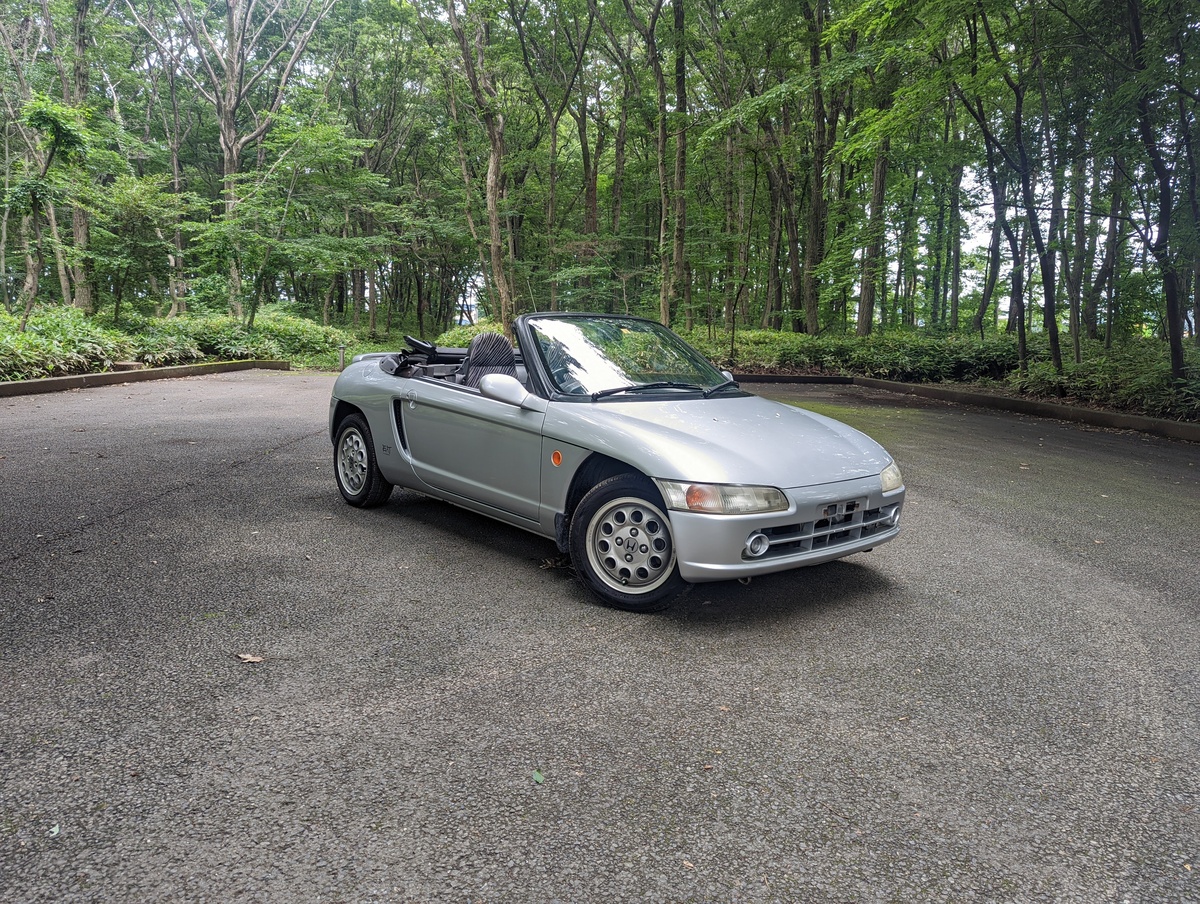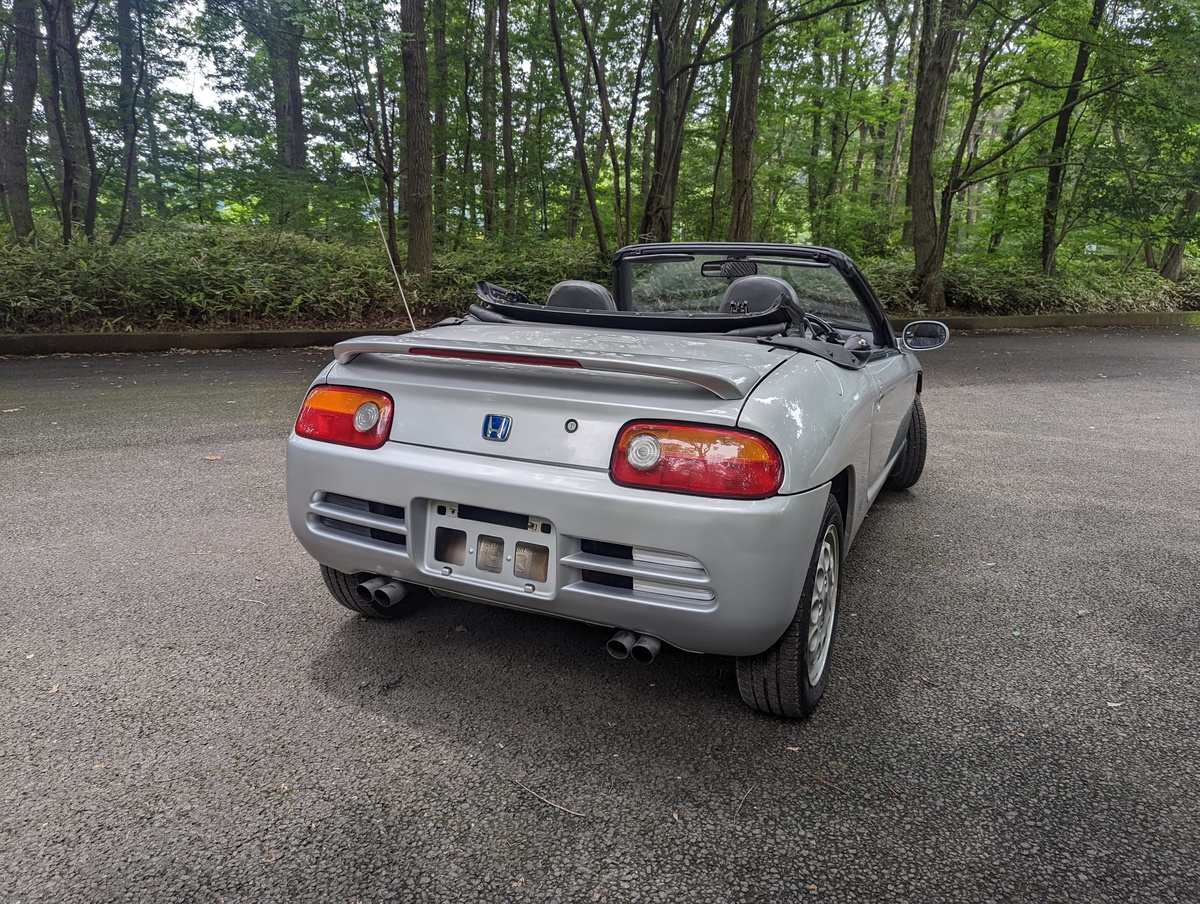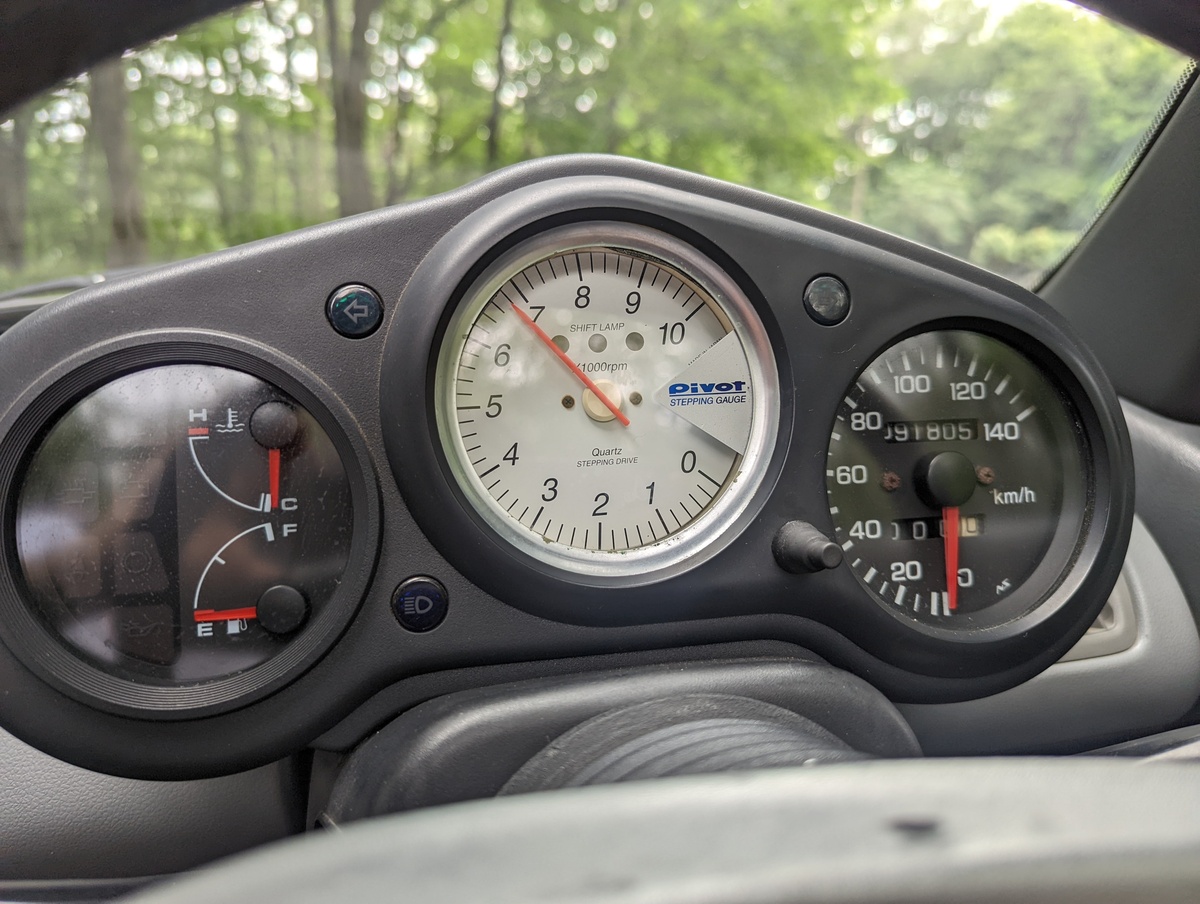The Honda Beat, The "Mini NSX"
2022-06-29
The Mini NSX, The Honda Beat
The Honda Beat is a mid-engined two-seater sport Kei car produced in Japan from 1991-1996 which was eventually proceeded by the S660. From the outside world for anyone not familiar with the car tax system
in Japan, it makes no sense to produce a “sports” car with a mere 64 horsepower. In Japan, however, it makes complete sense. Due to the congestion in big urban cities in Japan like Tokyo and Osaka, Japan
introduced a new category of cars called “Kei Cars” also known as “Keijidousha” in Japanese which need to be within a specific width and length limit to lessen the congestion of cars and they also have to be under 660cc to limit the pollution in big cities.
Kei cars are hugely popular in Japan due to tax benefits and less paperwork needed to register and own in comparison to regular cars. Also – due to Japan’s narrow roads, many people just prefer to own a Kei
car as they would be able to fit comfortably on Japan’s tiny roads.
Bringing it back to the Honda Beat, during the 90s, all Japanese automakers were innovating and making sports cars, whether it be the Supra, RX-7, GT-R, or the Integra. In January of 1990, the standards of what can be
considered a Kei car were revised, enabling manufacturers to make high-performance Kei cars. Honda was quick to pounce in 1991 with the release of the Honda Beat.

Exterior
The Honda Beat is not a particularly large car, standing at a mere 117cm tall and 139cm wide, making it one of the smallest sports cars ever to be in existence. Due to its small frame and exterior, however,
they were able to shave a lot of weight as it is only 760 kg heavy. Despite not making a lot of power, since it is such a lightweight car it makes up for its lack of power.
The car came default with a soft top and no hard top option from the factory, unlike the AZ-1. This was also part of the feeling to make the car feel “bigger” by offering a soft top by default due to its
small size, the car could feel a bit claustrophobic with the soft top latched on.
The Beat also features a backward opening bonnet. This design feature was to add a bit of flair to the beat and make it look unique and standing out from the crowd whenever you open the bonnet.
Other design touches like a small rear wing and aggressive rectangular headlights added to make the Beat look like a very attractive car.
Interior
The car with standard with some unique and very 90s zebra-patterned seats. This was to make the car feel more “fun” and appealing and to make it stand out a bit more. It was also matched with the classic 90s Japan
checkered floor mats. Due to its fairly small size, there wasn’t much to offer in terms of “extras” in the Beat and its main selling point was that it’s a very enjoyable car to drive. The gauge cluster further added this
by making the gauge the rpm meter. As the car red lines at 8100 pm, this was something which gave the Beat a lot of USP and more enjoyable.
Performance
The engine is an inline 3-cylinder naturally aspirated E07A type. It is the only naturally aspirated engine for any Kei car that delivers 64 horsepower, and it redlines at 8100rpm which is something really to be desired in a sports car.
The Honda Beat only came in a 5-speed manual transmission. Despite speculation of the Beat being released with an automatic as well as the manual, Honda decided however against
that notion to promote the Beat as a full-fledged “sports car”.
In addition, Honda's F1 technology of the time was also a part of the development team of the Beat's engine. This isn’t the only thing about the Beat which makes it special, but it was also the last car
ever to be approved by Shoichiro Honda (the founder of Honda) who died shortly afterward in 1991.
The Beat had to deliver on its NA engine for a sharp response without relying on a turbocharger or other supercharger. The size of the engine itself had to be small and lightweight so as not to spoil its appeal as a compact sports car.
To solve these problems, Honda chose to incorporate its MTREC (Multi Throttle Responsive Engine Control system), a high-response engine control system based on Honda's F1 technology, into the Beat.
Since the Honda Beat was equipped with the MTREC which was based on Honda’s F1 technology in combination with its being an NA engine and able to rev up to 8100rpm,
despite it only making 64 horsepower, this car was still very capable to corner at high speeds, and it is an extremely fun car to drive.
Our verdict
The Honda Beat from the face of it doesn’t seem that amazing with its “low” 64 horsepower however, on a day-to-day basis, isn’t it more fun to be able to drive our cars to their absolute limits and hear the
engine rev up to 8000rpm before shifting it into 3rd gear? Being such a small and light car, it corners incredibly well, and taking into consideration how expensive other JDM cars have become over the
years, it might be the best time to pick up this unique JDM jem.